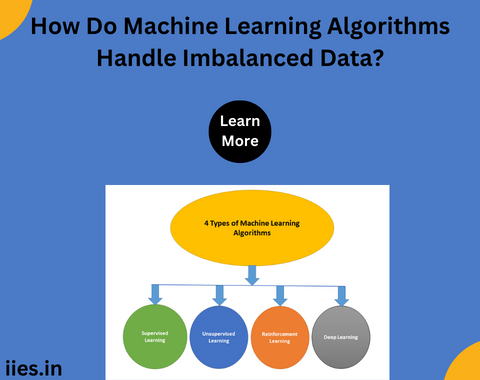
In the realm of machine learning, data is the lifeblood that fuels the engines of predictive modeling and decision-making. However, not all datasets are created equal, and one common challenge that machine learning practitioners face is dealing with imbalanced data.
Imbalanced data occurs when the distribution of classes in a dataset is uneven, with one class significantly outnumbering the others. This can pose a serious problem for machine learning algorithms, as they may struggle to accurately predict the minority class. In this article, we’ll explore the various strategies and techniques employed by machine learning algorithms to handle imbalanced data.
Before delving into the methods for handling imbalanced data, it’s crucial to grasp the implications of such imbalances.
In a binary classification problem, for instance, if one class constitutes the majority (negative class) and the other is the minority (positive class), the algorithm may become biased towards predicting the majority class. This is because the algorithm’s objective is often to maximize overall accuracy, and it can achieve high accuracy by simply predicting the majority class for most instances.
The Consequences of Imbalance
The consequences of imbalanced data are far-reaching. In scenarios where the minority class represents critical outcomes (such as fraud detection, disease diagnosis, or rare events prediction), misclassifying instances of the minority class can have severe implications. The model’s accuracy may appear high, but its ability to identify and predict the minority class is compromised.
Strategies for Handling Imbalanced Data
1. Resampling Techniques:
– Under-sampling: This involves reducing the number of instances in the majority class. Randomly removing instances from the majority class can help balance the class distribution.
– Over-sampling: This technique involves increasing the number of instances in the minority class. Methods like duplicating instances or generating synthetic instances using techniques like Synthetic Minority Over-sampling Technique (SMOTE) aim to balance the class distribution.
2. Cost-sensitive Learning:
– Assigning different misclassification costs to different classes can be an effective strategy. By penalizing misclassifications of the minority class more heavily, the algorithm is incentivized to focus on improving its predictions for the minority class.
3. Ensemble Methods:
– Ensemble methods, such as Random Forests or Boosting algorithms, can be powerful tools for handling imbalanced data. By combining the predictions of multiple models, these methods often exhibit better generalization and robustness, particularly when dealing with imbalances.
4. Algorithm-level Techniques:
– Some algorithms have inherent mechanisms to handle imbalanced data. For example, support vector machines (SVM) can be adjusted with different class weights, and decision trees can be pruned to avoid overfitting on the majority class.
5. Threshold Adjustment:
– By adjusting the classification threshold, practitioners can influence the trade-off between precision and recall. Lowering the threshold can increase sensitivity to the minority class, but it may come at the cost of increased false positives.
6. Data Augmentation:
– Introducing variations to the existing data through techniques like data augmentation can help the model generalize better, especially in scenarios where the minority class is underrepresented.
7. Hybrid Approaches:
– Combining multiple strategies in a hybrid approach can often yield superior results. For instance, a combination of under-sampling, over-sampling, and cost-sensitive learning may address imbalances more comprehensively.
Challenges and Considerations
While these strategies can enhance the performance of machine learning algorithms on imbalanced data, it’s essential to acknowledge that no one-size-fits-all solution exists. The choice of method depends on various factors, including the nature of the data, the specific problem being addressed, and the desired trade-offs between precision and recall.
Moreover, implementing these techniques requires careful consideration of potential pitfalls. For instance, aggressive over-sampling may lead to overfitting, where the model memorizes the training data rather than learning its underlying patterns. Similarly, cost-sensitive learning might require domain expertise to appropriately assign misclassification costs.
Advanced Resampling Techniques:
Adaptive Resampling:
Instead of using static under-sampling or over-sampling, adaptive resampling techniques dynamically adjust the sampling strategy during the training process. This adaptability allows the model to focus on areas where it struggles the most, mitigating the risk of oversensitivity or overfitting.
Ensemble of Classifiers:
Creating an ensemble of classifiers where each classifier focuses on different aspects of the imbalanced data can be a potent strategy. Each classifier can specialize in capturing patterns from specific regions of the feature space, improving the overall model’s ability to generalize to minority class instances.
Anomaly Detection:
Anomaly detection methods, such as One-Class SVM or Isolation Forest, can be employed when dealing with imbalanced datasets. These techniques identify instances that deviate from the norm, making them well-suited for detecting rare events in datasets where one class is significantly underrepresented.
Transfer Learning:
Transfer learning, a technique popularized in deep learning, involves leveraging pre-trained models on a related task before fine-tuning them on the imbalanced dataset. This approach benefits from the knowledge encoded in the pre-trained model and allows the model to adapt more efficiently to the imbalanced data.
Active Learning:
Active learning involves iteratively selecting the most informative instances for labeling, allowing the model to focus on the challenging instances in the dataset. By strategically choosing which instances to label, active learning can improve the model’s performance on the minority class without the need for extensive labeling efforts.
Evaluation Metrics Beyond Accuracy:
When dealing with imbalanced data, evaluating model performance solely based on accuracy may be misleading.
Handling imbalanced data is a nuanced challenge in the field of machine learning. As the demand for accurate predictions across diverse domains grows, addressing the imbalances in data becomes increasingly crucial. The strategies discussed in this article offer a toolkit for practitioners to navigate this challenge effectively. However, it’s essential to approach each problem with a thoughtful understanding of the data and a willingness to experiment with different techniques. As the field continues to evolve, the quest for robust solutions to imbalanced data remains an ongoing journey.
Indian Institute of Embedded Systems – IIES